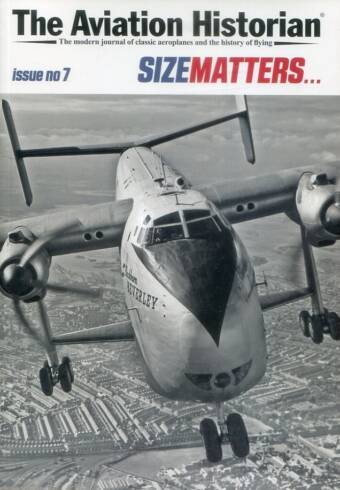Description
The cover subject for this issue is the prototype Short Sturgeon carrier-borne reconnaissance bomber. Along with the Westland Wyvern, it features in the second part of theseries looking at Royal Aircraft Establishment flight test reports – in this case both aircraft were being assessed for their deck-landing characteristics by the great Lt-Cdr Eric “Winkle” Brown. TAH47 features a major article which has taken quite some time to come to fruition: Professor Keith Hayward’s exploration of the political backdrop to the UK’s Al-Yamamah defence sales programme to Saudi Arabia during the early 1980s. The uphill struggle to procure the relevant documents has take years, with the article having to be set aside several times. Many important documents are still withheld, and the Freedom of Information application the publishers made was rejected, showing how sensitive this episode remains some 40 years after the event. Indeed, its consequences remain in the headlines to this day. It is to the Prof’s great credit that he has managed to weave together what is available to provide a fascinating political study of what must have seemed – certainly to the Saudis – to be the “Deal of the Century”.
One of the most poignant – and shocking – articles TAH has ever published is Kristen Alexander’s chronicle of the flying life and brutal death of RAAF Hampden pilot Jimmy Catanach. Not yet 23 years old, but with a year of operational bomber flying already under his belt, Jimmy was one of the 50 airmen murdered by the Gestapo after tunnelling out of Stalag Luft III during the “Great Escape” in March 1944, just over 80 years ago. Such a story goes well beyond the usual “war is hell” platitudes; to be killed performing a highly skilled job while flying on “Ops” is one thing, but the killing in cold blood of this young, cheerful and universally liked Aussie recalls a very dark period indeed in modern history. Jimmy’s fate was by no means unique, and Kristen is to be commended for keeping the memory of these remarkable young men alive in her excellent book Kriegies.
Of the several articles in this issue covering civil aviation, one of the most fascinating is Mr Armstrong’s Stepping Stones. Ralph Pegram opens a two-part account of a Canadian inventor’s stillborn inter-war project to create a chain of floating airports or “Seadromes” across the Atlantic, upon which high-capacity but short-range conventional airliners could alight to refuel.
In contrast, a seemingly crazy idea which bore productive fruit is featured in Col John W. Zink’s recollections of training to become a flying instructor on the Lockheed F-117A Nighthawk stealth attack aircraft, a machine so bizarrely faceted that it is a wonder it ever flew controllably, let alone successfully as a military asset.
Elsewhere, the current issue explores the USA’s helicopter airlines; Supermarine Scimitar display-flying; an airliner runway collision in Australia which led to serious questions about cockpit voice recorders; and pre-revolutionary Iran’s aerial surveys for an indigenous source of uranium to fuel its nuclear ambitions.
All this – and much more – awaits you in Issue 47 of The Aviation Historian.



